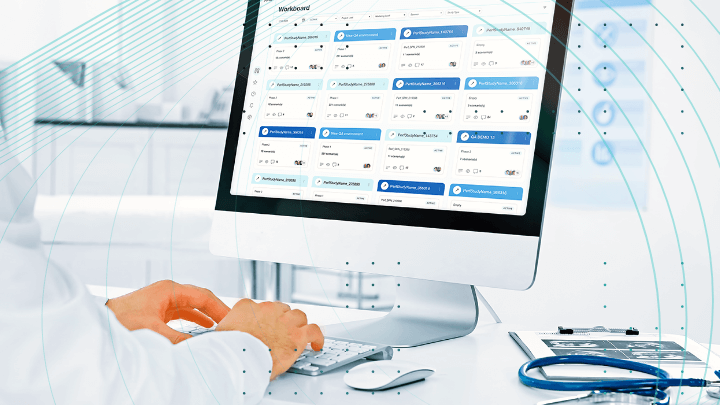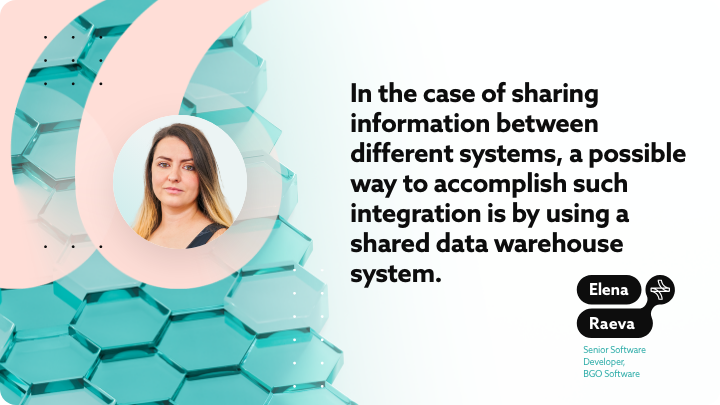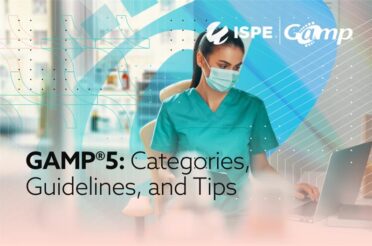The healthcare industry has always sought to make advances in the development of pharmaceuticals and medications that help people. It isn’t that simple, however, to produce a drug. The risk to people and the effectiveness of the medication itself have to be taken into account. The only way to make sure to do so properly is by conducting clinical trials.
Clinical trials, though, aren’t simple either. They are complex structures of procedures and documentation that need to be strict. The most fundamental part of such a trial is having participants.
Gathering participants is not always the simplest of tasks when it comes to a trial. In such cases, we have clinical trial recruitment forecasting software.
To better understand the key principles that govern such software and its implementation, we have conducted an interview with one of BGO’s software development experts. Elena Raeva has directly worked on projects developing this exact type of software and can provide a closer look at the details of making and utilizing such software in clinical trials.
Definition and primary functions of forecasting software
Forecasting software is a powerful tool that has been around for some time now. The technology has been getting more powerful over the past couple of years, having been even more improved by artificial intelligence and machine learning algorithms. People, and especially industries have been using it for various mathematical predictions and statistical reports on all sorts of different data.
In the realm of pharmaceutical development, forecasting software can be used in a variety of different ways, one of the more important ones being clinical trial recruitment.
Even though the population of our planet keeps growing, recruiting participants for clinical trials hasn’t gotten easier. The difficulty of finding patients for a trial may seem inconsequential in the long run but it is actually far from it.
Importance in the lifecycle of clinical trials
Clinical trials offer the possibility of creating a treatment that can help and even save many lives. Not being able to conduct it because of poor patient recruitment can be a future loss of lives.
Additionally, people who have passed the initial screening process but have failed to meet certain further criteria and have been dropped from trials are what are regarded as screen failures.
Screen failures are rather costly for trial sponsors, estimated to cost around $1,200 per failure. [1]
“Clinical trial recruitment forecasting software can give detailed reports to sponsors and trial staff on what they can expect in participant recruitment in a given area.”
What recruitment forecasting software can do is limit such costs and provide a much clearer picture of if or when a clinical trial can start with the needed number of patients.
85% of all clinical trials fail to gather the needed amount of participants and 80% are delayed due to recruitment problems. [2]
Recruitment forecasting software can aid in lowering such percentages significantly.
Key features of effective recruitment forecasting software
The complexity of such software cannot be underestimated. To have the software accomplish what you need, there must be a set of necessary features that need to be implemented into the system.
Discounts
Discounts are a fundamental part of forecasting software. Since a forecasting system for clinical trials doesn’t actually take into consideration the specific patients’ medical history, there are other means to add extra filters for the given clinical site.
The location of a clinical trial definitely has a significant impact on the recruitment strategy and process. It is quite consequential where the study takes place and the different societal conditions of the area.
“Discounts are a form of added filters for a given trial. Whether the trial is conducted during a holiday in the given country, or even whether the trial itself is about a certain type of illness that would affect recruitment or dropout rates.”
According to Elena, forecasting software can be given different additional specifications that need to be considered when developing a statistical model for a clinical trial.
Predictive analytics
One of the many different options for an algorithm that can be utilized in clinical trial forecasting software is the Monte Carlo algorithm. Elena Raeva has worked on a project developing such software that has used this exact algorithm.
The Monte Carlo algorithm is a computational technique that uses random sampling to obtain numerical results. In the context of clinical trial recruitment forecasting, this algorithm helps predict the recruitment timelines and potential outcomes by simulating various scenarios based on probabilistic models.
How does the whole process actually work though?
It can be divided into three parts:
- Random sampling: The algorithm generates random samples from a defined probability distribution for different variables involved in the recruitment process (e.g., participant availability, and screening success rates).
- Simulation: It runs numerous simulations to model the recruitment process under various scenarios, each time using a different set of random samples.
- Aggregation: The results from all simulations are aggregated to provide a probability distribution of potential outcomes, helping to identify the most likely recruitment timeline and potential risks.
Large databases
As we mentioned before, recruitment forecasting software doesn’t actually take patient history and medical information into account when developing its reports. Not the participant candidates’ data at least.
Such software is fed large amounts of information ranging from medical histories, patient records, and data from previous related clinical trials in order to make correct predictions.
“For forecasting software to function properly, it has to be given a large enough set of data to have a basis in order to make predictions.”
Our expert tells us that such software can analyze all the previous data on such trials and make predictions for future ones based on the information. Furthermore, many clinical trials take more than just a year with some ranging to a decade.
In such cases, forecasting software can be given information on the recruiting of a trial based on data from the trial itself.
Scenario planning
When software is given a large amount of data to analyze and make predictions on, it can give very detailed probabilities and statistics. What happens if the results, however, are not good enough for the prospects of the clinical trial?
What such software can do in such cases is also take into account certain additional factors that can be included in the recruitment process in order for the trial to continue forward.
An example given by our expert in such cases is if the system determines that a certain subset of countries where participants are being gathered from isn’t enough to meet said recruitment needs. In such a case, the software can offer an additional country for the patient pool and in doing so, improve the statistics.
Such functionalities allow users to create and test various recruitment scenarios to determine the most effective strategies. It also enables clinical research experts to explore the impact of different variables (e.g., changing inclusion criteria, extending recruitment periods).
Real-time data analysis and reporting features
Real-time monitoring and reporting in clinical trial recruitment forecasting software provide essential tools for tracking progress against targets.
User-friendly dashboards display key metrics such as:
- Screened and enrolled participants;
- Recruitment rates;
- Site-specific performance using visual aids such as graphs and progress bars.
Customizable views allow users to focus on the most relevant data, supporting informed decision-making and optimizing recruitment strategies.
Automated alerts notify researchers of potential issues, such as low patient enrollment rates or high dropout rates, via email, SMS, or in-app notifications. These alerts enable timely interventions, allowing for quick adjustments to recruitment strategies or resource allocation.
This proactive management improves efficiency, ensures compliance with regulatory requirements, and helps maintain the trial’s timeline and budget.
Challenges in clinical trial recruitment and how software can help
One of the chief reasons for even needing forecasting software is because of the difficulty of the clinical trial recruitment process itself.
Clinical trial recruitment faces significant challenges, primarily due to strict participant eligibility criteria. These stringent inclusion and exclusion parameters often lead to a high number of potential candidates being screened out, which causes delays in the recruitment process.
Finding suitable participants becomes even more difficult when dealing with rare diseases or specific demographic groups. Moreover, reaching and making these potential participants aware of the trial is a daunting task, further complicating the recruitment efforts.
Geographic barriers also pose a substantial challenge, as many participants live far from trial sites, making it difficult for them to attend regular appointments and follow-ups. This distance can discourage participation and lead to higher dropout rates. Additionally, keeping participants engaged throughout the trial is crucial. However, many drop out due to a lack of motivation or the perceived inconvenience of participation. Addressing these patient engagement issues is essential to ensure participants remain committed for the trial’s duration.
Accounting for all these factors is what forecasting software is designed to do. Figuring out ways to mitigate them and improve the chances of the clinical trial is also what stands at the center of developing forecasting software.
Understand the benefits of recruitment forecasting software Speak to an expert today, and see how our on-demand IT talent and augmented teams can efficiently deliver value at every step of your roadmap.

Integration capabilities with other trial management systems
When developing software, one of the key concerns is always its ability to integrate with already-existing systems. Having to deal with a multitude of systems can be frustrating, especially when these systems have absolutely no way to communicate with one another.
Clinical trial recruitment forecasting systems more often than not work side by side with some Clinical Trial Management System (CTMS). These systems are what are most commonly used to digitalize the clinical trial workflow and make it more efficient. For such a system to function properly, it needs some additional information that can be taken from precisely such a shared data warehouse.
Instead of having to fully integrate the different systems together with the new forecasting software, they just make sure to place all the needed data into a data warehouse where the potential CTMS software can access and use it. And vice versa, the forcasting software can be fed with data from the studies.
Implementing recruitment forecasting software
There are two interested parties in the use of clinical trial recruitment forecasting software. On one side are the clinical trial statistical modelers, who give the specifications and functionalities they need from the software. These are power users, as our expert refers to them. They work with spreadsheets filled by the forecasting software to give relevant data to the second side – the clinical trial sponsors.
“A big challenge in the development of such analytical software is the communication with the power users because of not having a common language in regards to mathematics.”
The modelers are statistical experts who specify what exactly they need from the software. Not being able to meet them on the same level mathematically can be challenging for the implementation of the software itself. With enough cooperation, however, this is an obstacle that can be overcome.
Training staff and monitoring software performance
Another obstacle that is common in software development is the training of the staff to work with the software. In the case of forecasting software, the main users are the mentioned power users.
According to our expert, there isn’t much-needed training for these modelers because they already know what they want. Their work will be mainly through spreadsheets. Where the issue arises here is in the development of the software itself, since the developers need to be well-acquainted with the calculations of the data and the functionalities of the spreadsheets.
Regulations and validation of the software
Given the nature of the software itself, it is indeed not that common of practice to impose strict regulations on the development. Unlike a clinical trial management system where there need to be very specific guidelines in the make and use of the systems, when it comes to forecasting software, validation is a more common in-house process.
Because the forecasting software is mainly meant to report on statistical data for the recruitment process itself and not actually influence that stage of the clinical trial directly, there aren’t any rules imposed on the design by regulatory institutions. There are, however, several inside validations that are still required to make sure the software runs as it should.
These tests are both formal and informal according to Elena. In such a project with the amount of calculations and system operability that is required, there is a lot of documentation, even more so than other projects.
There are two types of tests:
- User Acceptance Testing (UAT): User acceptance testing ensures the software meets end-user requirements and performs correctly in real-world scenarios before deployment. It involves users executing test scenarios, identifying issues, and verifying fixes.
- System Integration Testing (SIT): System integration testing checks that different software modules or systems work together seamlessly, focusing on data flow and communication. Both UAT and SIT are essential for delivering a reliable, integrated, and user-approved software product.
There are three separate teams that do the testing. There is an inside team that does the formal and informal SIT testing and two teams that deal with the informal and formal UAT testing. The difference between the two UAT teams is that one is in-house and the other is by the business for which the software is developed.
Learn how to implement recruitment forecasting software Learn how from our consultants. We work with clients worldwide.
Conclusion
The recruitment of participants for a clinical trial is the most fundamental part of executing a successful trial in the hopes of developing a pharmaceutical product.
There are many different obstacles in the recruitment process itself and being able to foresee such problems and adequately account for them is what recruitment forecasting software is designed to do.
Finding a partner with the needed expertise in the field of developing such software is what can make the difference between a successful or a failed clinical trial.
Sources


















